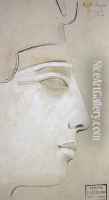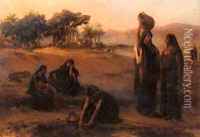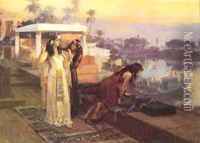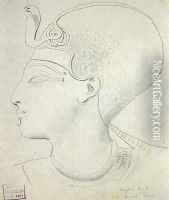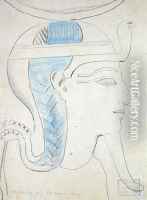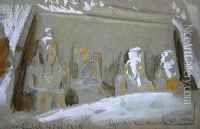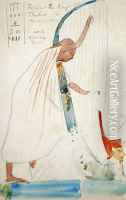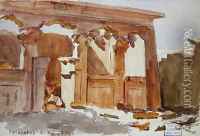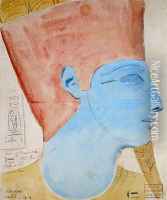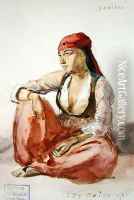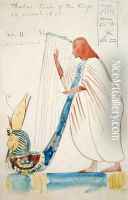F. A. Bridgeman Paintings
Frederick Arthur Bridgeman, born in 1847 in Tuskegee, Alabama, was an American artist known for his Orientalist and genre scenes. Bridgeman demonstrated an interest in art from an early age and began his formal education in Brooklyn, where his family had moved during his early childhood. He later traveled to Paris to continue his studies under the tutelage of Jean-Léon Gérôme, a renowned French painter whose influence is evident in Bridgeman's work.
Bridgeman's career flourished in the late 19th century, a period in which Orientalist art was highly appreciated in Western Europe and the United States. He became well known for his detailed and vivid depictions of North African and Middle Eastern landscapes and people, capturing the public's imagination with scenes full of color and exoticism. His works often portrayed the daily lives of inhabitants, markets, and other aspects of the non-Western culture that appealed to the tastes of his contemporaries.
Throughout his lifetime, Bridgeman traveled extensively in the regions he painted, particularly in Algeria and Egypt. His commitment to portraying his subjects with accuracy and depth was well-regarded, and he took great care to include authentic architectural and costume details in his compositions.
Bridgeman exhibited his paintings in various salons and exhibitions, gaining recognition and awards, including medals in Paris Expositions. His art was also sought after by collectors and art patrons, which allowed him to enjoy a successful career.
Frederick Arthur Bridgeman's legacy is that of a prolific and respected Orientalist painter. His works continue to be appreciated for their contribution to the genre and are held in numerous museum collections worldwide. Bridgeman passed away in 1928 in Rouen, France, leaving behind a rich body of work that offers insight into the Western fascination with Eastern cultures during the 19th century.
